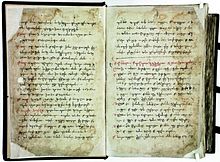
Medicine is the science and practice of caring for a patient, managing the diagnosis, prognosis, prevention, treatment, palliation of their injury or disease, and promoting their health. Medicine encompasses a variety of health care practices evolved to maintain and restore health by the prevention and treatment of illness. Contemporary medicine applies biomedical sciences, biomedical research, genetics, and medical technology to diagnose, treat, and prevent injury and disease, typically through pharmaceuticals or surgery, but also through therapies as diverse as psychotherapy, external splints and traction, medical devices, biologics, and ionizing radiation, amongst others.
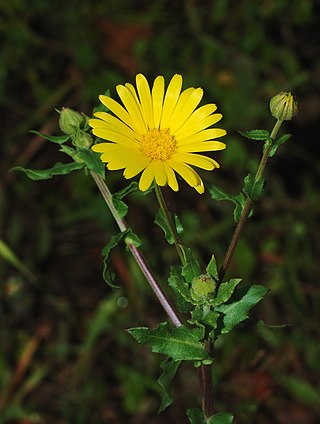
Calendula is a genus of about 15–20 species of annual and perennial herbaceous plants in the daisy family Asteraceae that are often known as marigolds. They are native to southwestern Asia, western Europe, Macaronesia, and the Mediterranean..

In Greco-Roman geography, Colchis was an exonym for the Georgian polity of Egrisi located on the coast of the Black Sea, centered in present-day western Georgia.

The Ebers Papyrus, also known as Papyrus Ebers, is an Egyptian medical papyrus of herbal knowledge dating to circa 1550 BC. Among the oldest and most important medical papyri of ancient Egypt, it was purchased at Luxor in the winter of 1873–74 by Georg Ebers. It is currently kept at the Leipzig University Library in Germany.
Historically, mental disorders have had three major explanations, namely, the supernatural, biological and psychological models. For much of recorded history, deviant behavior has been considered supernatural and a reflection of the battle between good and evil. When confronted with unexplainable, irrational behavior and by suffering and upheaval, people have perceived evil. In fact, in the Persian Empire from 550 to 330 B.C., all physical and mental disorders were considered the work of the devil. Physical causes of mental disorders have been sought in history. Hippocrates was important in this tradition as he identified syphilis as a disease and was, therefore, an early proponent of the idea that psychological disorders are biologically caused. This was a precursor to modern psycho-social treatment approaches to the causation of psychopathology, with the focus on psychological, social and cultural factors. Well known philosophers like Plato, Aristotle, etc., wrote about the importance of fantasies, dreams, and thus anticipated, to some extent, the fields of psychoanalytic thought and cognitive science that were later developed. They were also some of the first to advocate for humane and responsible care for individuals with psychological disturbances.

Allopathic medicine, or allopathy, is an archaic term used to define science-based modern medicine. There are regional variations in usage of the term. In the United States, the term is used to contrast with osteopathic medicine, especially in the field of medical education. In India, the term is used to distinguish modern medicine from Ayurveda, homeopathy, and other similar alternative/traditional medicine, especially when comparing treatments and drugs.
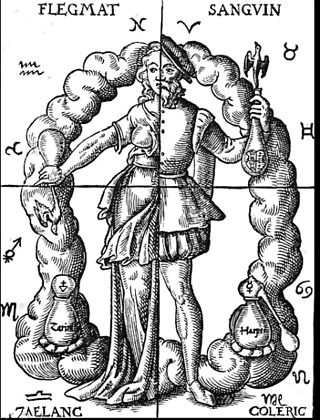
Humorism, the humoral theory, or humoralism, was a system of medicine detailing a supposed makeup and workings of the human body, adopted by Ancient Greek and Roman physicians and philosophers.

Herbal medicine is the study of pharmacognosy and the use of medicinal plants, which are a basis of traditional medicine. With worldwide research into pharmacology, some herbal medicines have been translated into modern remedies, such as the anti-malarial group of drugs called artemisinin isolated from Artemisia annua, a herb that was known in Chinese medicine to treat fever. There is limited scientific evidence for the safety and efficacy of plants used in 21st century herbalism, which generally does not provide standards for purity or dosage. The scope of herbal medicine commonly includes fungal and bee products, as well as minerals, shells and certain animal parts. Herbal medicine is also called phytomedicine or phytotherapy.

Traditional medicine comprises medical aspects of traditional knowledge that developed over generations within the folk beliefs of various societies, including indigenous peoples, before the era of modern medicine. The World Health Organization (WHO) defines traditional medicine as "the sum total of the knowledge, skills, and practices based on the theories, beliefs, and experiences indigenous to different cultures, whether explicable or not, used in the maintenance of health as well as in the prevention, diagnosis, improvement or treatment of physical and mental illness". Traditional medicine is often contrasted with scientific medicine.

Medieval medicine in Western Europe was composed of a mixture of pseudoscientific ideas from antiquity. In the Early Middle Ages, following the fall of the Western Roman Empire, standard medical knowledge was based chiefly upon surviving Greek and Roman texts, preserved in monasteries and elsewhere. Medieval medicine is widely misunderstood, thought of as a uniform attitude composed of placing hopes in the church and God to heal all sicknesses, while sickness itself exists as a product of destiny, sin, and astral influences as physical causes. On the other hand, medieval medicine, especially in the second half of the medieval period, became a formal body of theoretical knowledge and was institutionalized in the universities. Medieval medicine attributed illnesses, and disease, not to sinful behaviour, but to natural causes, and sin was connected to illness only in a more general sense of the view that disease manifested in humanity as a result of its fallen state from God. Medieval medicine also recognized that illnesses spread from person to person, that certain lifestyles may cause ill health, and some people have a greater predisposition towards bad health than others.

Apothecary is a mostly archaic term for a medical professional who formulates and dispenses materia medica (medicine) to physicians, surgeons, and patients. The modern chemist or pharmacist now perform this role. In some languages and regions, the word "apothecary" is still used to refer to a retail pharmacy or a pharmacist who owns one. Apothecaries' investigation of herbal and chemical ingredients was a precursor to the modern sciences of chemistry and pharmacology.
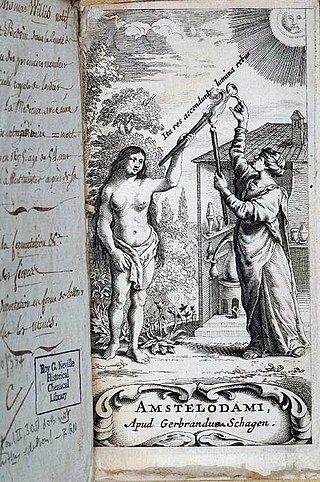
Iatrochemistry is a branch of both chemistry and medicine. Having its roots in alchemy, iatrochemistry seeks to provide chemical solutions to diseases and medical ailments.

The medicine of the ancient Egyptians is some of the oldest documented. From the beginnings of the civilization in the late fourth millennium BC until the Persian invasion of 525 BC, Egyptian medical practice went largely unchanged and included simple non-invasive surgery, setting of bones, dentistry, and an extensive set of pharmacopoeia. Egyptian medical thought influenced later traditions, including the Greeks.
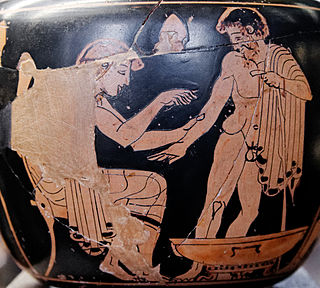
Ancient Greek medicine was a compilation of theories and practices that were constantly expanding through new ideologies and trials. Many components were considered in ancient Greek medicine, intertwining the spiritual with the physical. Specifically, the ancient Greeks believed health was affected by the humors, geographic location, social class, diet, trauma, beliefs, and mindset. Early on the ancient Greeks believed that illnesses were "divine punishments" and that healing was a "gift from the Gods". As trials continued wherein theories were tested against symptoms and results, the pure spiritual beliefs regarding "punishments" and "gifts" were replaced with a foundation based in the physical, i.e., cause and effect.
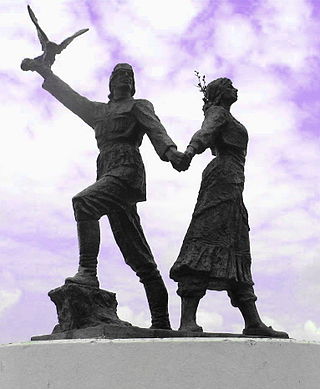
The Laz people, or Lazi, are an indigenous ethnic group who mainly live in Black Sea coastal regions of Turkey and Georgia. They traditionally speak the Laz language which is a member of the Kartvelian language family but has experienced a rapid language shift to Turkish. From the 103,900 ethnic Laz in Turkey, only around 20,000 speak Laz and the language is classified as threatened (6b) in Turkey and shifting (7) in Georgia on the Expanded Graded Intergenerational Disruption Scale.

Medicine in ancient Rome was highly influenced by ancient Greek medicine, but also developed new practices through knowledge of the Hippocratic Corpus combined with use of the treatment of diet, regimen, along with surgical procedures. This was most notably seen through the works of two of the prominent Greek physicians, Dioscorides and Galen, who practiced medicine and recorded their discoveries. This is contrary to two other physicians like Soranus of Ephesus and Asclepiades of Bithynia, who practiced medicine both in outside territories and in ancient Roman territory, subsequently. Dioscorides was a Roman army physician, Soranus was a representative for the Methodic school of medicine, Galen performed public demonstrations, and Asclepiades was a leading Roman physician. These four physicians all had knowledge of medicine, ailments, and treatments that were healing, long lasting and influential to human history.
Traditional bone-setting is a type of a folk medicine in which practitioners engaged in joint manipulation. Before the advent of chiropractors, osteopaths and physical therapists, bone-setters were the main providers of this type of treatment. Traditionally, they practiced without any formal training in accepted modern medical procedures. Bone-setters would also reduce joint dislocations and "re-set" bone fractures.
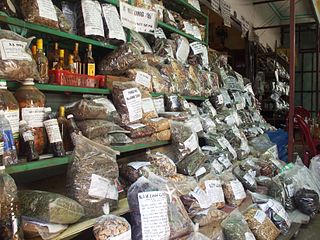
Traditional Vietnamese medicine, also known as Southern Herbology is a traditional medicine practiced by Vietnamese people. It is influenced by traditional Chinese medicine. The other traditional medicine that is also practiced in Vietnam is traditional Chinese medicine, also known as Northern Herbology. Thuốc Nam is one of two kinds of folk remedies known to villagers, the other being the traditional exercise dưỡng sinh.
The history of herbalism is closely tied with the history of medicine from prehistoric times up until the development of the germ theory of disease in the 19th century. Modern medicine from the 19th century to today has been based on evidence gathered using the scientific method. Evidence-based use of pharmaceutical drugs, often derived from medicinal plants, has largely replaced herbal treatments in modern health care. However, many people continue to employ various forms of traditional or alternative medicine. These systems often have a significant herbal component. The history of herbalism also overlaps with food history, as many of the herbs and spices historically used by humans to season food yield useful medicinal compounds, and use of spices with antimicrobial activity in cooking is part of an ancient response to the threat of food-borne pathogens.

Learned medicine is the European medical tradition in the Early Modern period, when it experienced the tension between the texts derived from ancient Greek medicine, particularly by followers of the teachings attributed to Hippocrates and those of Galen vs. the newer theories of natural philosophy spurred on by Renaissance humanistic studies, the religious Reformation and the establishment of scientific societies. The Renaissance principle of "ad fontes" as applied to Galen sought to establish better texts of his writings, free from later accretions from Arabic-derived texts and texts of medieval Latin. This search for better texts was influential in the early 16th century. Historians use the term medical humanism to define this textual activity, pursued for its own sake.
